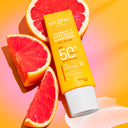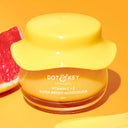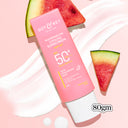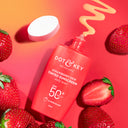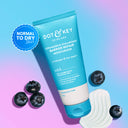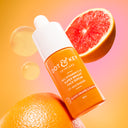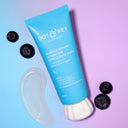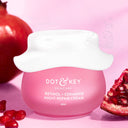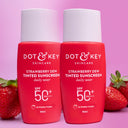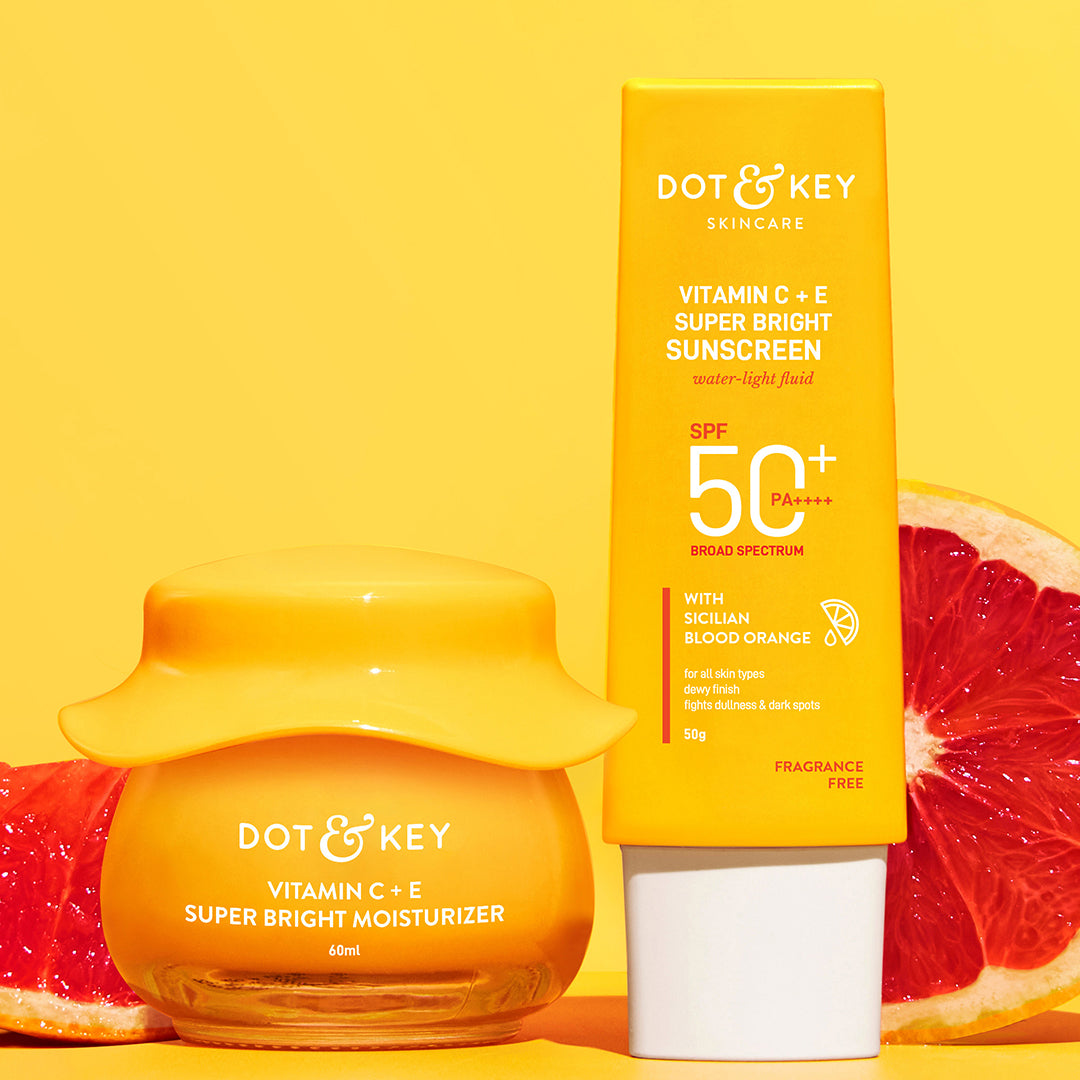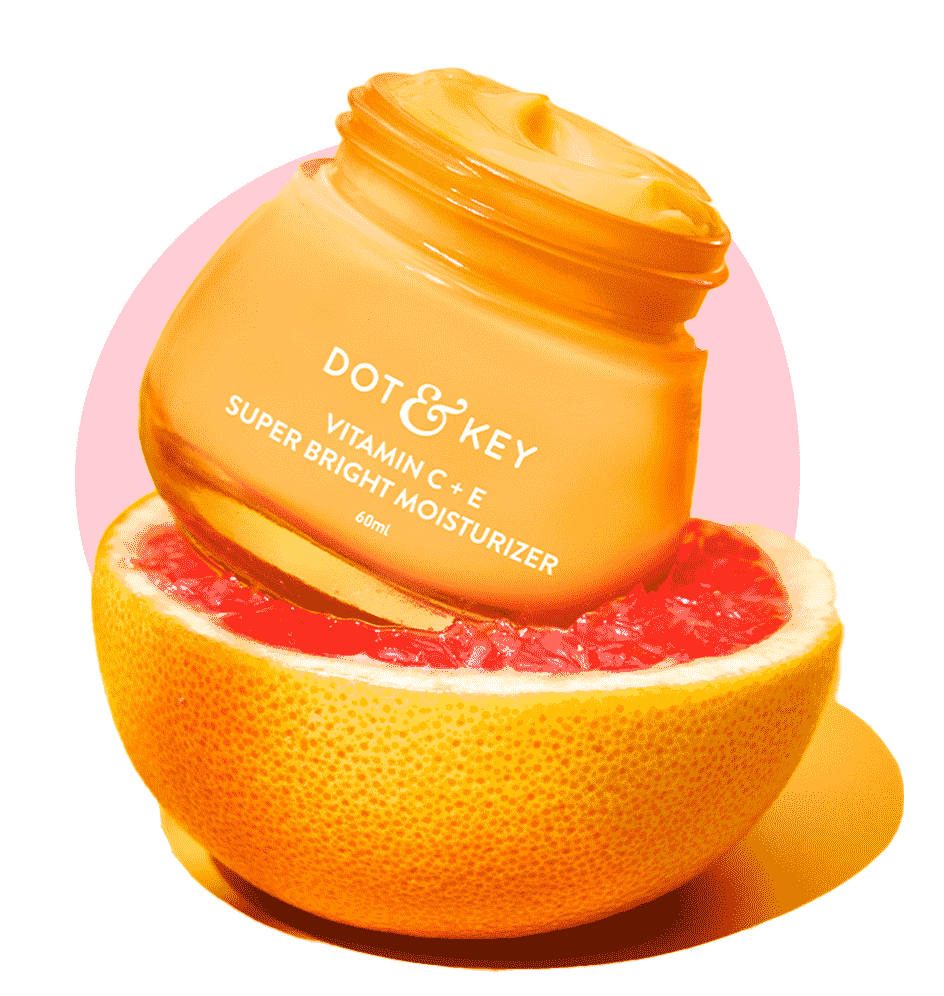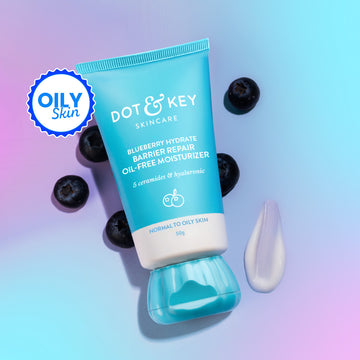
In the world of skincare, few topics have sparked as much conversation as the skin barrier. This invisible shield is your skin’s frontline defence—keeping hydration locked in while fending off pollutants, bacteria, and environmental stressors. When it’s compromised—whether from harsh weather, over-exfoliation, or everyday lifestyle habits—problems like dryness, irritation, and heightened sensitivity quickly follow.
That’s where barrier repair moisturizers step in. These specialized formulations are designed to restore balance, strengthen the skin’s protective layer, and maintain long-term hydration. But here’s the key: not all barrier repair creams are the same. Their compositions vary depending on skin type, ensuring that everyone—from those with normal to dry skin to individuals with oily or extremely dry complexions— can find the right fit.
In this post, we’ll unpack the science behind barrier repair moisturizers and highlight the differences between three types: one tailored for normal to dry skin, another for very dry and sensitive skin, and a third for oily & combination skin. Grounded in dermatological research yet explained simply, this guide will help you understand how each formula works— so you can confidently choose what your skin truly needs for a stronger, healthier glow.
The Science Behind the Skin Barrier
Before we compare the moisturizers, let’s briefly unpack what the skin barrier is and why it matters. Scientifically known as the stratum corneum, this outermost layer of the epidermis serves as the skin’s first line of defence. It’s made up of cells called corneocytes, held together by essential lipids such as ceramides, cholesterol, and fatty acids. Picture it like a brick wall: the cells act as the bricks, and the lipids are the mortar—together, they prevent moisture loss while blocking out irritants, pollutants, and bacteria.
When this barrier becomes compromised—a common issue affecting nearly half of individuals with skin concerns—transepidermal water loss (TEWL) rises. This leads to dehydration, inflammation, and increased susceptibility to conditions like eczema, acne, and irritation. External factors such as ageing, UV exposure, pollution, and even certain actives like retinoids can weaken this defence system over time.
Barrier repair moisturizers are formulated to counter these effects by replenishing lost lipids, restoring hydration, and reinforcing the skin’s natural structure. Clinical studies suggest that consistent use can reduce TEWL by up to 30% while improving elasticity and overall comfort.
Think of your skin barrier like a garden fence—when it’s well-maintained, it keeps the good stuff in and the unwanted out. A weakened fence, however, lets external aggressors sneak in and moisture seep out. The right moisturizer restores those gaps— but the ideal formula for you depends entirely on your ‘soil,’ or in this case, your skin type.
What Makes a Barrier Repair Moisturizer Effective?
Barrier repair moisturizers do more than just hydrate — they actively restore the skin’s protective function. Most are formulated with a strategic mix of humectants (to attract moisture), emollients (to smooth and soften), and occlusives (to lock it all in). Star ingredients like ceramides help replenish the skin’s natural lipids, reinforcing the barrier from within. Meanwhile, hyaluronic acid, a powerful humectant, can bind up to 1,000 times its weight in water—delivering deep hydration without feeling heavy or greasy.
That said, effectiveness depends on formulation fit. Richer, cream-based textures suit dry or compromised skin, while lightweight gels or emulsions are better for oily or combination types. Matching your moisturizer to your skin’s needs ensures it supports repair and hydration—without tipping the balance.
Key Differences Between the Three Types
Each barrier repair moisturizer shares a common mission—to strengthen the skin’s barrier, restore hydration, and calm irritation—but they differ in texture, ingredient intensity, and targeted function. Think of them as levels of support: from daily maintenance to deep recovery, depending on your skin’s needs.
Barrier Repair Moisturizer
Ideal for normal to dry skin that occasionally feels tight or dehydrated—whether from seasonal changes, travel, or mild barrier stress. It delivers balanced, long-lasting hydration, locks in moisture for 120hrs that keeps dryness from spiraling into irritation.
Key ingredients include a blend of 5 essential ceramides to rebuild lipids, hyaluronic acid for plumpness, and japanese rice water, known for its anti-inflammatory and soothing effects. Light nourishing oils like jojoba or olive-derived squalane add softness without heaviness.
The texture finds that sweet spot between comfort and breathability —lightweight, smooth cream, and quick-absorbing, leaving no stickiness or greasy residue.
Benefits: Provides 120 hours of hydration, strengthens skin barrier, smoother texture, and soothes irritation. Clinical data often show improved barrier function and reduced transepidermal water loss (TEWL) within weeks. It’s also an excellent buffer for actives like retinol, making it a versatile, everyday option for maintaining resilience.
In short: The “balanced” option—rich enough to comfort, light enough for daily wear.
Barrier Repair Intense Moisturizer
Tailored for very dry, flaky, or sensitive skin, this rich, reparative formula delivers deep hydration and barrier restoration when your skin needs intensive care—think winter dryness or post-treatment irritation.
Alongside ceramides and hyaluronic acid, it’s boosted with squalane (a skin-identical lipid), shea butter for lasting nourishment, and antioxidants like blueberry extract to defend against environmental stress. Panthenol and allantoin provide extra soothing for irritation-prone skin.
The texture is indulgently rich yet non-greasy, melting in to leave a comforting, protective veil.
Benefits: Instantly smooths rough patches, reduces flakiness, and helps restore suppleness. Studies suggest that rich, lipid-heavy creams like this can strengthen the barrier more effectively in severely dry skin than lighter formulations.
In short: The “rescue” version—deeply nourishing, fragrance-free, and ideal for compromised barriers.
Barrier Repair Oil-Free Moisturizer
Oily or combination skin often gets overlooked in barrier repair discussions, as excess sebum can mask underlying dehydration. This oil-free moisturizer fills that gap ,focusing on lightweight hydration & strengthening the barrier without clogging pores or adding shine.
It incorporates ceramides for repair, hyaluronic acid for hydration and niacinamide to regulate oil production and smooth texture. Soothing rice water calms redness, while algae extracts provide additional balance.
The texture is a refreshing gel-cream: ultra-light, fast-absorbing, non-sticky & non-greasy
Benefits: Balanced hydration, reduced irritation, and strengthened barrier function without breakouts. Clinical research supports that niacinamide-rich, oil-free formulations can improve TEWL and reduce inflammation even in acne-prone skin.
In short: The “smart hydrator”—weightless, oil-free, and ideal for keeping shine under control while reinforcing the barrier.
Ingredients in Focus: The Building Blocks of Repair
Across all three barrier repair moisturizers, a few powerhouse ingredients take center stage — and for good reason:
- Ceramides: The cornerstone of a healthy barrier. They lock in moisture and block irritants, while pairing them with hyaluronic acid boosts hydration synergy.
- Hyaluronic Acid: A hydration magnet that attracts and retains up to 1,000 times its weight in water, leaving skin plump, supple, and replenished.
- Rice Water: Especially in its fermented form, it soothes irritation and nurtures a balanced microbiome — great for calming sensitive or oily skin.
- Niacinamide (in the oil-free variant): Regulates excess sebum, refines pores, and strengthens barrier function without clogging.
- Shea Butter and Squalane (in the intense variant): Deliver rich, nourishing emollience for chronically dry or compromised skin, restoring softness and comfort.
These ingredients are backed by dermatological research, not marketing fluff — proven to reinforce skin health and resilience over time.
How to Choose and Use the Right Moisturizer
Start by listening to your skin:
- Normal to Dry: Choose a balanced, creamy texture for steady hydration - Barrier Repair Moisturizer
- Very Dry or Sensitive: Go for a richer, reparative formula - Barrier Repair Intense Moisturizer
- Oily or Combination: Pick a gel-based, oil-free option to hydrate without heaviness - Barrier Repair Oil-free Moisturizer
Application Tips:
- Cleanse gently to avoid stripping natural oils.
- Apply a pea-sized amount on slightly damp skin for optimal absorption.
- Use morning and night—and always follow with sunscreen in the AM.
- Patch-test first if your skin is reactive or sensitive.
Remember, consistency beats intensity — barrier repair is a gradual process, and results compound beautifully with daily use.
Conclusion
Barrier repair moisturizers are game-changers for maintaining skin health, but their effectiveness hinges on matching your skin type. The version for normal to dry skin offers versatile hydration, the intense one delivers profound nourishment for very dry and sensitive concerns, and the oil-free variant provides lightweight balance for oily and combination types. By understanding these differences, you can nurture your skin's barrier, leading to a more comfortable, radiant complexion. Always consult a dermatologist for personalised advice, especially if dealing with persistent issues.
Key Takeaways
- The skin barrier is vital for hydration and protection; repair moisturizers restore it with lipids like ceramides.
- Formulations differ by texture and ingredients: lightweight for oily, rich for very dry, balanced for normal to dry.
- Common benefits include reduced irritation and improved texture, supported by science.
- Choose based on your skin's needs to avoid imbalances.
- Incorporate into routines for long-term resilience.
FAQs
Can I use a barrier repair moisturizer if I have acne?
Absolutely, especially the oil-free type for oily skin. It hydrates without clogging pores and can soothe inflammation from breakouts. Look for non-comedogenic labels.
How long does it take to see results from these moisturizers?
Many notice instant hydration, but full barrier repair often takes 2-4 weeks of consistent use, as per clinical studies.
Are these suitable for sensitive skin?
Yes, all variants are typically fragrance-free and gentle. The intense one is particularly soothing for very sensitive, flaky skin.
Can I layer them with other actives like retinol?
Certainly—they buffer irritation from actives. Apply the moisturizer after serums to seal in benefits.
What's the difference between a regular moisturizer and a barrier repair one?
Regular ones hydrate superficially, while barrier repair formulations specifically replenish lipids to fix the underlying structure, offering longer-term moisturization and skin barrier protection.

